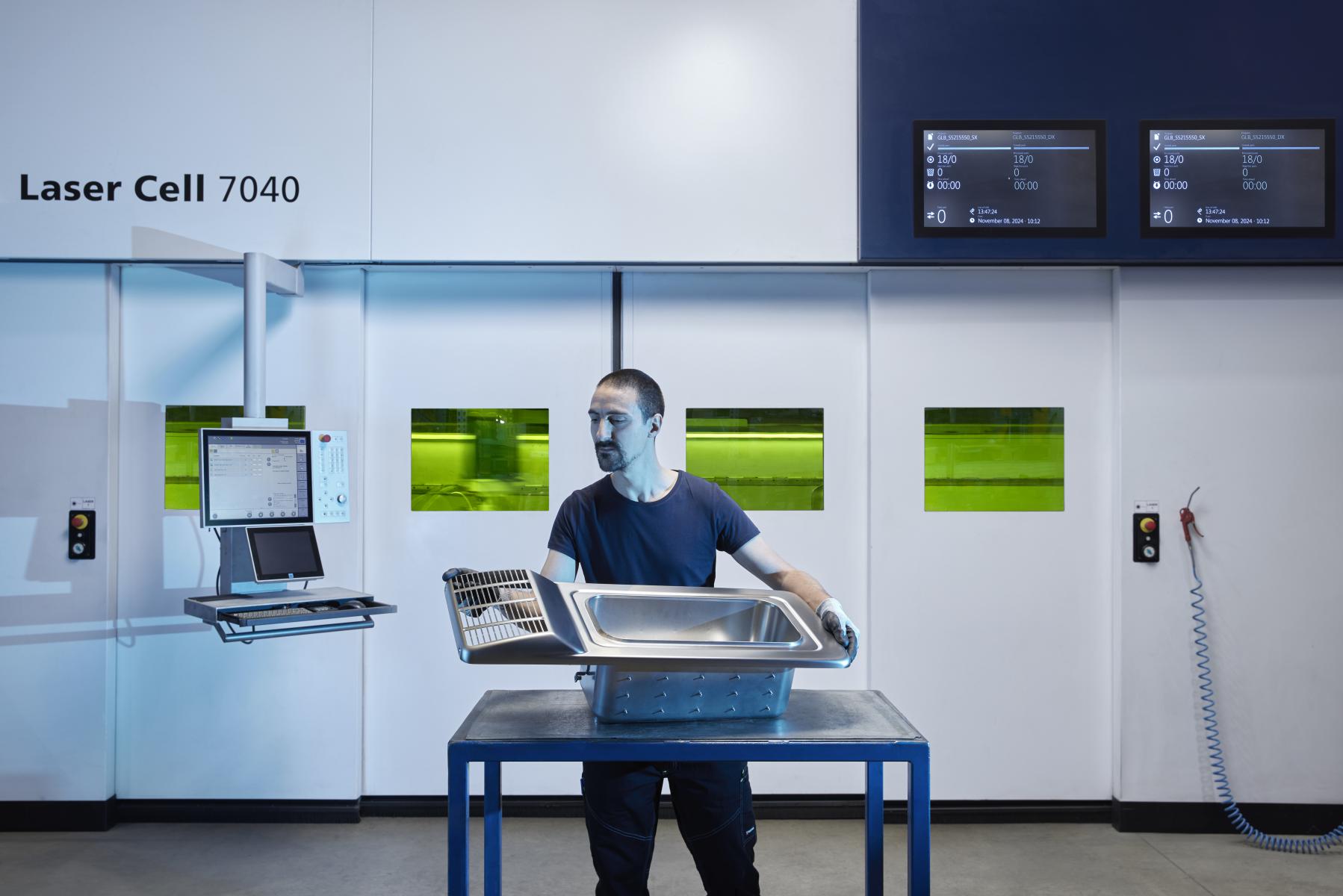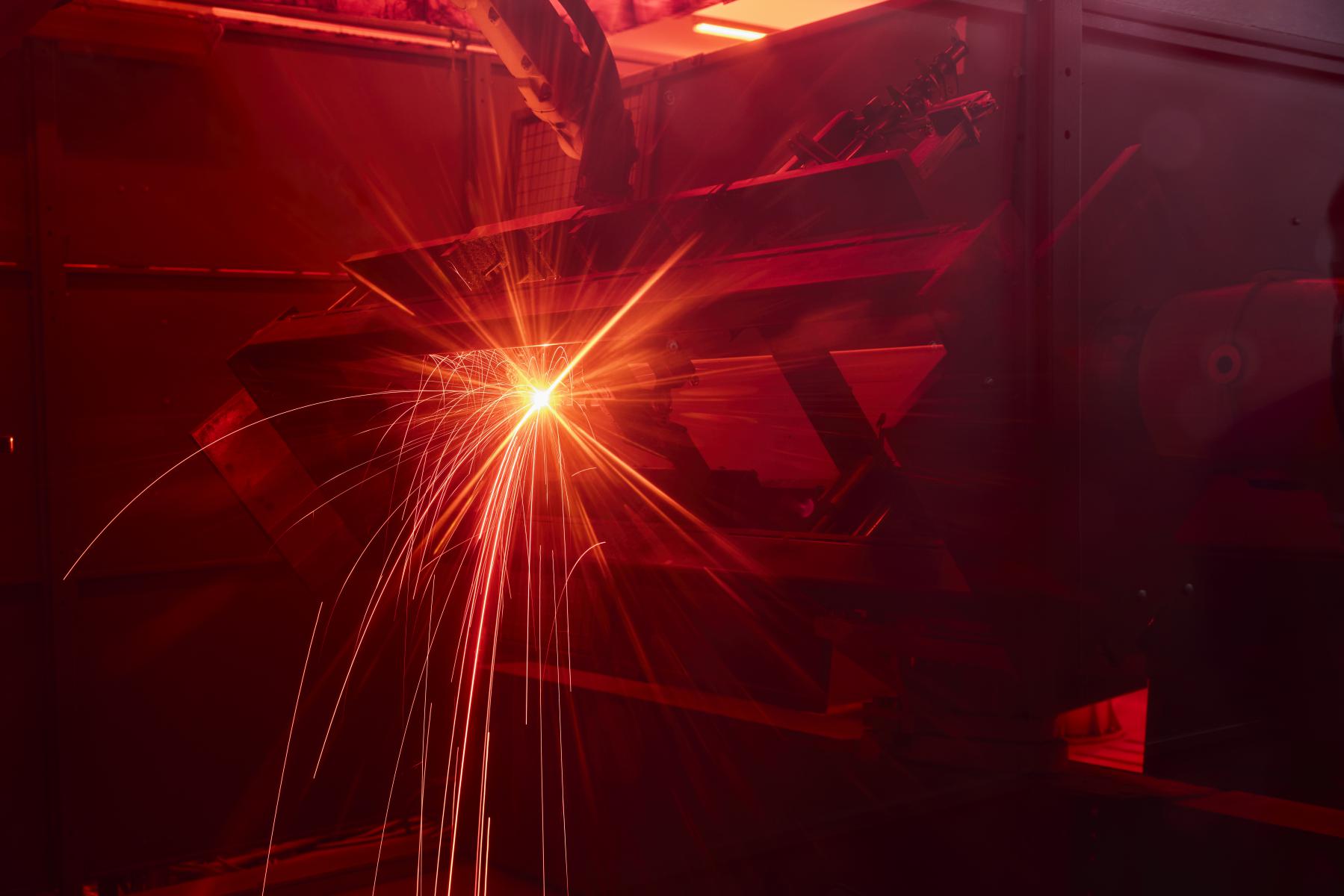Fil d'Ariane
Aluminum Laser Cutting: Benefits, Applications, and Minifaber Solutions
In this article, we will explore the advantages of aluminum laser cutting, its main industrial applications, the solutions offered by Minifaber, and the reasons why choosing laser cutting for aluminum can make a significant difference in production environments.

Aluminum laser cutting refers to a manufacturing technology increasingly used in industrial sectors that demand precision, speed, and versatility. In this article, we will cover the advantages of aluminum laser cutting, its main industrial applications, the solutions offered by Minifaber, and why choosing laser cutting for aluminum can significantly enhance production processes.
The Importance of Laser Cutting for High-Quality Aluminum Workpieces
Laser cutting on aluminum allows for highly accurate, defect-free processing, even on complex shapes or thin materials. The combination of cutting-edge technologies and specialized expertise makes this technique particularly beneficial for various production sectors.
How Laser Cutting Works
Laser cutting is a high-precision thermal process that uses a focused laser beam to cut material through localized fusion along a defined path. The laser beam is generated by a laser source (typically fiber or CO₂), directed via mirrors or optical fibers to a lens system that focuses it on the aluminum sheet at a point called the focus.
When the laser beam hits the aluminum surface, the electrons of the material’s atoms begin to vibrate, instantly raising the material’s temperature, causing only the focused area to melt and eventually vaporize. A stream of gas (nitrogen) is blown through the cutting nozzle to remove the molten material and clean the engraving area, creating a very thin, precise groove.
Main advantages include:
- No physical contact, preventing mechanical deformations, marks, and indentations on the material.
- Reduced thermally altered zone, preserving the material’s properties and preventing thermal distortions.
- CNC movement, enabling complex, repetitive cuts at high speeds.
- Process automation, allowing integration into advanced production lines.
These advantages make aluminum laser cutting the ideal choice for sectors that require high geometric precision, impeccable finishing, and maximum production efficiency.
Aluminum: A Material with Many Potential Applications
Aluminum is one of the most valued materials in the industrial sector due to its many physical and mechanical properties. It is lightweight, durable, malleable, and fully recyclable. These properties make it particularly suitable for processing with advanced technologies like aluminum laser cutting.
Key properties of aluminum include:
- Lightweight: With a density about a third of that of steel, aluminum is ideal for applications where weight reduction is crucial, such as in automotive, aerospace, and transport sectors.
- High thermal conductivity: Aluminum dissipates heat quickly, a useful feature in the electromechanical industry.
- High reflectivity: A feature appreciated and used in sectors like professional lighting, making it the preferred material for these applications.
- Good corrosion resistance: The spontaneous formation of a protective oxide layer (alumina) on the surface makes aluminum particularly suitable for outdoor environments and sectors requiring corrosion resistance. This characteristic can be further enhanced through anodization treatments.
However, these same characteristics pose technical challenges in aluminum processing, particularly with conventional methods like shearing, punching, or stamping. This is where aluminum laser cutting becomes an extremely advantageous solution: it overcomes the difficulties related to reflectivity and thermal conductivity while maintaining high precision and clean cuts.
Technical Challenges and Minifaber Solutions
Processing aluminum with lasers involves several challenges due to the material’s nature. Its high reflectivity can reduce the effectiveness of the laser beam, and its thermal conductivity quickly disperses heat, affecting the stability of the cut. To achieve precise and reliable results, specialized technologies and techniques are necessary.
The Importance of Laser Power and Wavelength
A key factor is the choice of laser. For aluminum laser cutting, Minifaber uses high-power systems with varying wavelengths, depending on whether a fiber or CO₂ laser is used. This overcomes the challenges related to reflection, providing clean and uniform cuts even on thicker materials.
Temperature Management
Another critical aspect is temperature management during the process. Aluminum, which absorbs and dissipates heat rapidly, can cause deformations or irregularities in the cut. To address this, Minifaber employs advanced process parameters that keep the working zone stable and preserve the integrity of the workpiece.
Tailored Cutting Parameters
Each aluminum alloy has different physical properties. Therefore, cutting parameters—such as speed, gas pressure, and focal distance—must be carefully calibrated. Thanks to its experience and state-of-the-art CNC machinery, Minifaber can customize each operation based on the material composition and required thickness, ensuring high-quality results in a repeatable manner.
Expertise and Efficiency for the Client
Minifaber tackles the technical challenges of aluminum laser cutting with an engineering approach that combines technology, continuous training, and attention to detail. The expertise gained over the years allows the company to guarantee precise cuts even on complex geometries, with fast production times and high-quality standards. This makes Minifaber the ideal partner for projects requiring reliability, efficiency, and customization.
Benefits of Aluminum Laser Cutting
Choosing aluminum laser cutting means opting for a technology that combines quality, efficiency, and versatility. Thanks to the precision of the laser beam and the ability to customize every parameter, this process is one of the most requested in the industrial sector, especially for aluminum, a material challenging to process with traditional methods.
Millimeter Precision and High Cut Quality
Laser cutting ensures clean, sharp cuts even on irregular shapes and complex geometries, with precision down to a tenth of a millimeter. This results in excellent aesthetic and functional quality of the finished parts, suitable even for highly specialized sectors such as professional lighting, automotive, and aerospace.
Furthermore, the process does not exert pressure on the material, preventing mechanical deformations, indentations, and scratches that could affect the appearance. The high localized temperature also reduces the risk of damage and thermal alterations, preserving the structural integrity of the part.
Another significant advantage is the absence of burrs and minimal need for post-processing finishes: the edges are smooth and ready for subsequent stages, reducing time and costs.
Production Efficiency and Savings
Laser cutting optimizes the use of the initial material: typically a sheet of aluminum, thanks to the ability to optimize the arrangement of the pieces to be cut (Nesting). This results in a significant reduction of waste, positively impacting both economically and environmentally.
Moreover, the process’s repeatability allows identical results even on large quantities of parts, enhancing order reliability and simplifying quality control.
Another strength is the excellent output on small batches: laser cutting does not require dedicated equipment or expensive molds, making it advantageous for customized or limited production runs.
Application Versatility Across Various Industrial Sectors
Aluminum laser cutting easily adapts to thin and medium thicknesses, maintaining constant quality even on very light parts. This makes it ideal for applications requiring a combination of lightness, precision, and strength.
The technology is compatible with different aluminum alloys, each with its specific characteristics. Whether structural, decorative, or technical alloys, laser cutting guarantees high-quality results.
Finally, the laser allows for rapid and flexible executions, even on customized parts, with reduced setup times and quick file modifications. This makes the technology perfect for tailor-made projects and on-demand production, where timing and quality are crucial factors.
Typical Applications of Aluminum Laser Cutting
Aluminum laser cutting is used in a wide variety of industrial sectors, combining precision, speed, and aesthetic quality. Below are some of the most common applications.
Industrial and Mechanical Components
In the field of mechanics and manufacturing, laser cutting is used to create protective covers, brackets, technical panels, supports, and frames. These components require high dimensional precision and strength, features guaranteed by laser cutting even on thin aluminum sheets or with complex geometries. The ability to automate the process also allows for series production with reduced tolerances.
Design and Furniture
In the world of design and furniture, the laser offers creative freedom and high-quality finishes, ideal for creating decorative elements, architectural panels, furniture components, or lighting structures. Aluminum, thanks to its lightness and workability, is well-suited for custom projects, even with engravings or customized artistic cuts.
Automotive and Transport
Aluminum is widely used in the automotive sector for its lightness and strength properties. Laser cutting enables the production of structural parts and accessories for frames, bodywork, interior and exterior fittings, helping to reduce the overall weight of the vehicle and improve energy efficiency. The process is also suitable for components in the railway, nautical, and aerospace industries.
Electronics and Packaging
In the electronics and packaging sectors, aluminum laser cutting is essential for producing enclosures, shields, supports for printed circuit boards, and metal plates. In these fields, precision in details and the ability to achieve perfectly smooth edges are crucial to ensure the correct alignment of components and the efficiency of electromagnetic shielding.
Food Contact
Aluminum is a material that can come into direct contact with food and foodstuffs, just like stainless steel. For this reason, it is widely used in this sector.
Medical
Due to its hygienic properties and resistance to corrosion, aluminum is used in the medical field.
Minifaber Technologies and Expertise for Aluminum Laser Cutting
Minifaber offers a combination of advanced technologies and specialized expertise to provide high-performance aluminum laser cutting services, suitable for both large-scale production and custom projects.
Cutting-Edge Machinery for Maximum Efficiency
The company uses state-of-the-art CNC and laser equipment designed to ensure maximum precision and repeatability, even on complex parts or irregular geometries. CAM software optimizes cutting paths, minimizing material waste and improving production efficiency.
Minifaber also integrates laser technology with punching to optimize processing quality and performance.
Furthermore, the high level of automation allows Minifaber to easily manage both large production volumes and small series, samples or customized orders, without compromising quality and delivery times.
High-Quality Standards and Customization Options
Minifaber is known for its ability to work with tight tolerances, ensuring the highest precision required by specialized sectors. Every part undergoes rigorous quality controls with certified measuring tools and skilled personnel.
The flexibility of the process also allows for the creation of prototypes and pre-series, ideal for testing new products or developing custom solutions in collaboration with the client. This approach helps reduce time-to-market and improve the performance of the finished product.
Additional Services for a Complete Offering
In addition to laser cutting, Minifaber offers a range of complementary services that enable the delivery of a complete product, ready for use or integration into more complex production lines. These include:
- Surface finishes, such as satin finishing, anodizing, painting, and protective treatments;
- Mechanical assembly, including the assembly of different components, with guaranteed sealing and functionality;
- Design consultancy, to support the client in choosing the most suitable technical solutions, optimizing part geometry, and improving the overall project performance.
Contact us for a consultation or a free quote. Learn more about our aluminum laser cutting and metalworking services on the Minifaber website.

